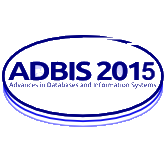KEYNOTE PRESENTATION
In the era of Big data, Information and Communication Technologies have supported cities in becoming smart. A smart city is a urban environment in which social and environmental resources are combined to make cities more livable by increasing urban prosperity and competitiveness. Thus, the smart city applications are an interesting domain where Big Data methodologies can effectively contribute to enhance user life.
The BigDap 2015 workshop includes a keynote presentation held by
Daniele Quercia. He is a computer scientist and has been named one of Fortune magazine’s 2014 Data All-Stars. He spoke about “happy maps” at TED. He is interested in the relationship between online and offline worlds, and his work has been focusing on the area of urban informatics. He was Research Scientist at Yahoo Labs, a Horizon senior researcher at The Computer Laboratory of the University of Cambridge, and Postdoctoral Associate at the Massachusetts Institute of Technology. He received his PhD from UC London. His thesis was sponsored by Microsoft Research Cambridge and was nominated for BCS Best British PhD dissertation in Computer Science.
Computational Urban “Science”!
Some of you have used large quantities of online data to study social dynamics in new ways. That tremendous effort resulted in the emergence of a new research area called “computational social science”. Consider the specific case of online networked individuals (e.g., users of Twitter, Instagram, Flickr). Can their social dynamics be used to build better tools for future cities? To answer that question, a few years ago, our research started to focus on understanding how people psychologically experience the city. We used computer science tools to replicate 1970s social science experiments at scale, at web scale. The result of that research has been the creation of new maps, maps where one does not only find the shortest path but also the most enjoyable path1. What if we had a mapping tool that would return the most enjoyable routes based not only on aesthetics but also based on smell and sound? This talk will address that question by showing how a creative use of social media can tackle hitherto unanswered research questions (e.g., how to capture smellscapes and soundscapes of entire cities).



